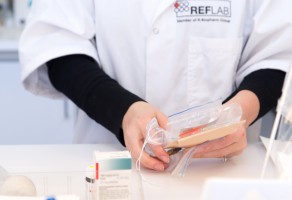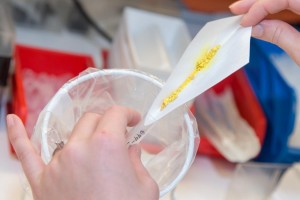a-BHRA / HR-Test and drug allergy
 The diagnostic work up of drug induced allergic reactions is complicated due to a range of different factors:
The diagnostic work up of drug induced allergic reactions is complicated due to a range of different factors:
- The pathophysiologic mechanisms are diverse even if the symptoms are the same and this makes the choice of diagnostic tools difficult
- Patients might be allergic to drug metabolites
- Patient disease (example: infections) can mimic the allergic symptoms
- Skin Prick Test (SPT) might be contraindicated due to the risk of local or systemic reactions
- Drug provocations can cause serious reactions and is therefore only possible at highly specialized department and costs are high
For the reasons mentioned above demonstration of drug allergy can be complicated and therefore in vitro diagnostic tools should be a supplement but not the only tool in the diagnostic work up. Especially a negative test result might be false negative.
 The principle of HR-Test is to detect histamine released from patient blood after incubation with the culprit drug that might be either:
The principle of HR-Test is to detect histamine released from patient blood after incubation with the culprit drug that might be either:
- A vaccine (1) or
- A disinfectant (2) or
- An antibiotic (3; 4) or
- A medical device (5) or
- An antineoplastic agent (6)
Therefore, in principle all kinds of test material can be used. In order to perform the HR-Test a fresh heparinized blood sample is drawn from the patient and enclosed with a sample of the culprit material (pill, ampoule or solid material) sent to the test laboratory.
- Clinical and diagnostic features of perioperative hypersensitivity to cefuroxime (7)
- Standardized testing with chlorhexidine in perioperative allergy – a large single centre evaluation (8)
These studies compare drug provocation with skin test, IgE and HR. HR can be used, but is not as sensitive as skin test. Many clinics prefer to avoid skin tests with drugs as serious side effects have been reported.
The test has to be performed within 24-48 hours after blood sampling due to the short-lived histamine containing blood basophils. Upon arrival, the laboratory staff dissolves the material and dilutions of the sample are made in order to test the material in several concentrations. Aliquots of 25 µL washed blood are added to the material to let the basophils release their content of histamine. Histamine is detected by selective adsorption to glass microfibers coated in the bottom of microtiter plates. Adsorbed histamine is subsequently detected fluorometrically in a HISTAREADER®. A readout >10 ng histamine released from the blood sample indicates that the HR-Test is positive towards the drug.
An explanation of the a-BHRA classifications can be found via the button below.
